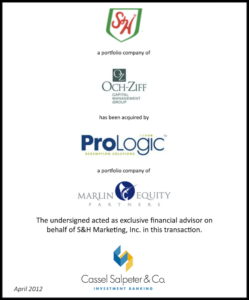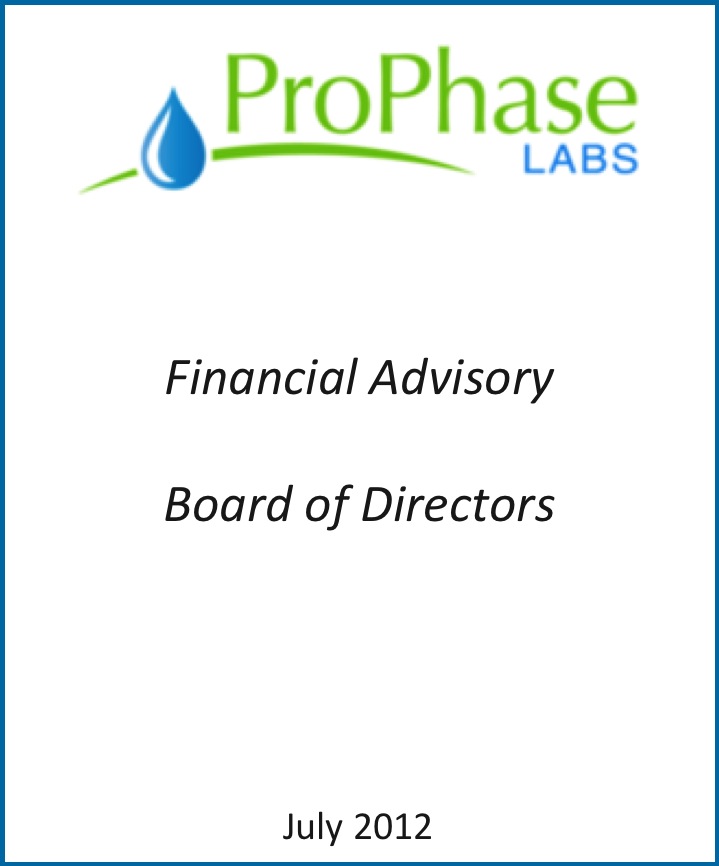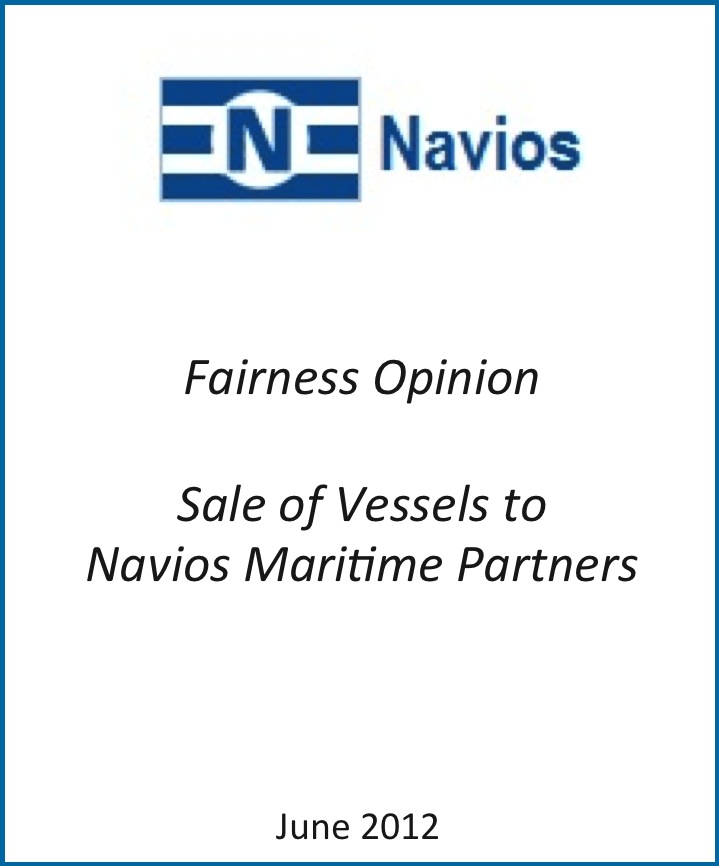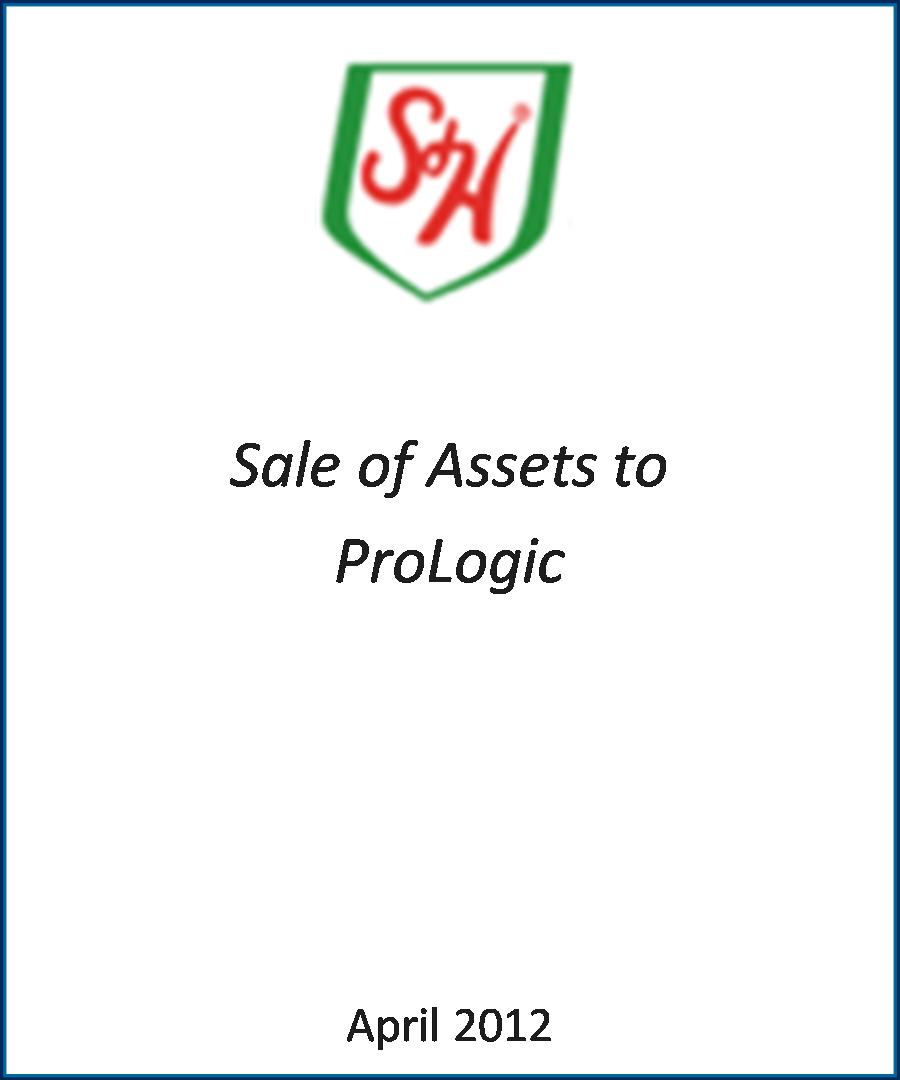What Does Affordable Healthcare Act Mean for Business?
Making the right choices now could go a long way toward protecting your bottom line later.
By: James Cassel
To view original article click here.
MIAMI, Florida, July 22, 2012 – With all the debate surrounding the Affordable Care Act, one could easily get lost in the rhetoric and lose sight of the issue that’s important now: The law is here, whether you like it or not. Clearly, the new or expanded coverage slated for millions of additional people will bring more costs – whether in the form of a tax or penalty. No matter how you feel about that fact, it’s time to set aside politics and take an objective look at the implications of this new law for your business.
One of the most frustrating challenges that middle-market business owners will likely soon face is continued uncertainty. While some people say that the Affordable Healthcare Act will save a substantial amount of money over time and others say it will do just the opposite, nobody knows the ultimate implications because this law is still new. Even the threats ranging from slight modification to repeal of this law will probably remain unknown until after the November election and beyond.
Although it’s impossible to predict the future, we know at least one thing is certain: Because some provisions have already gone into effect and other provisions will be phased in during the next three years, companies will have to redesign their current plans and/or offer new plans to employees.
The time to begin studying this is now. If not managed properly, the issues associated with this law could hurt the bottom line for businesses. For example, automatic enrollment provisions for businesses with more than 200 employees make it critical for businesses to gauge how many of their employees are likely to opt out and to develop appropriate strategies.
Some key points to keep in mind:
• Many businesses that currently provide employee group coverage at reduced premiums may face higher costs. If this happens, some business owners might feel motivated to simply pay the penalties for not offering health insurance to their employees, which was not the intended effect of this law. On the other hand, some believe that insurers may end up competing for your business, bringing down premiums (although this seems highly unlikely).
• Businesses that provide the top-tier plans for certain employees may face higher costs with a 40 percent excise tax tagged onto those “Cadillac” plans if the values of those plans exceed $10,200 for individuals or $27,500 for family coverage. To help prevent this from happening, you should examine your current policies and determine if you will be subject to the new tax. If so, you might want to modify the benefits.
• Another issue facing the business community: the non-discrimination provision in the new law. Businesses will not be able to continue to offer top-tier “Cadillac” plans to some employees while offering others more basic coverage. Offering the same coverage to all employees can be a costly proposition for many business owners. Some small-business owners who cannot afford to offer the same high-quality coverage to all employees worry that this could motivate senior talent to look for jobs at bigger companies that offer better coverage. It is possible that supplemental coverage will be available.
• Owners of some smaller businesses may benefit from tax credits aimed at helping to reduce the costs of providing insurance. However, make sure to understand the fine print, as there will be certain restrictions based on income and other criteria. For example, businesses with 25 or fewer employees who pay average annual wages of less than $50,000 and provide health insurance may qualify for asmall business tax credit of up to 35 percent (up to 25 percent for nonprofits) of the costs of their premiums. Starting in 2014, some small businesses could qualify for tax credits as high as 50 percent. This might sound good, but how many businesses will actually qualify?
• Businesses with employer-based health insurance plans that cover retirees between 55 and 64 years of age can now obtain financial help through the Early Retiree Reinsurance Program.
• It’s said that businesses with fewer than 100 employees may be able to shop for insurance in anAffordable Insurance Exchange, a new “marketplace” where individuals and small businesses may look for affordable health benefit plans. Employers with fewer than 50 employees are said to be exempt from new employer responsibility policies and don’t have to pay an assessment if their employees get tax credits through an Affordable Insurance Exchange. There are still unanswered questions, however, about if and how these exchanges will be established.
Some additional key points relevant to coverage:
The new law makes it easier to obtain insurance for children and adults with pre-existing conditions, many of whom have historically been unable to afford or obtain coverage. It also requires insurance companies to cover certain types of preventive care, including things like screenings and immunizations, without requiring you to make co-payments or co-insurance or meet your deductibles. Starting Jan. 1, 2014, the new law will do away with the dollar limits on benefits that had been previously imposed by many health plans, meaning that health plans can no longer cap their yearly or lifetime spending for your covered benefits.
Again, it’s difficult to know with any certainty either how the new law will affect middle-market business owners or how middle-market business owners will respond. For example, this new law could motivate some businesses owners to do more outsourcing or use temporary labor through third-party providers. Companies in medical and biotech industries, for example, could benefit from provisions in the law that allow for intellectual property protection.
The bill is highly complex and exceeds 2,000 pages. The bottom line: every business has unique needs, and it’s important to consult with qualified insurance professionals who can provide a detailed analysis of all the implications of this law to your business and help you consider all your options. Making the right choices now could go a long way toward protecting your bottom line later.
James S. Cassel is co-founder and chairman of Cassel Salpeter & Co., LLC, an investment-banking firm with headquarters in Miami that works with middle-market companies.www.casselsalpeter.com
Obtaining Equity Capital in Today’s Market
To view original article click here.
There are several types of investors and equity securities from which to choose. However, they won’t all be a good fit.
By: James Cassel
MIAMI, Florida, July 1, 2012 – Growing a company is seldom easy, and today’s economic environment doesn’t make it much easier. However, even in today’s economy, there are ways to raise equity capital.
But first, put yourself in the place of a potential investor. While investors are by nature willing to take risks, they generally will not just give you money without terms and conditions. Keep in mind that money comes with strings.
When seeking equity capital, there are several types of investors and equity securities from which to choose. However, they won’t all be a good fit. In many situations, the company’s stage of growth and amount of equity financing sought will determine what type of investor, equity, and terms and conditions will be available and most appropriate.
INVESTMENTS
To navigate these waters, here’s a look at the types of equity investments and investors.
Angel Investors: Although angel investors may be friends and family, in most cases they are the type of investors who come after friends and family but before venture capitalists for early stage companies. Angels are people with money and an appetite for risk. These investors may potentially: bring a wealth of experience to this process, have significant relationships with key individuals or companies, and provide valuable management advice. They also may be willing to provide seed money, i.e. startup money, which can become expensive because of the relatively high risks associated with starting a business. Bottom line: Angel investors can be an attractive option for higher-risk, small businesses poised for rapid growth at favorable valuations.
Venture Capitalists: With a more formalized vetting process, venture capitalists invest in a small percentage of the deals they review, as they tend to be extremely selective. Their risk tolerance is often high, and therefore, so is the required rate of return. When they do become interested, it’s usually early in a company’s life. This is usually the first investment by institutional investors. They add expertise, contacts, advice and money. They invest with a planned exit event, such as an initial public offering (IPO) or sale.
Private Placements (of equity): Private placements can include debt, equity or both. While raising money quickly is possible from a legal and structural basis, finding investors of any kind takes time. Private placements can be a good option for growth companies, mature companies looking to expand, and those that want to expand without going public. This money can come from individuals or institutional investors. There can be great flexibility in both the structure and valuation of the deal.
One consideration in private placements is the Jumpstart Our Business Startups Act (JOBS), signed into law in April. The bill basically removes the prohibition on general solicitation and advertisement by issuers relying on Rule 506 of Regulation D (Reg D) under the Securities Act of 1933, as amended. In other words, thanks to Reg D, you may, subject to certain rules and regulations, advertise for investors. The SEC has yet to issue the required regulations under the JOBS Act.
IPOs: Going public for most companies provides an infusion of capital as well as the ability to use its stock as currency for making acquisitions. While IPOs can be expensive, and becoming a public company involves much higher levels of accountability and regulatory requirements, IPOs can also bring many benefits. Although generally thought of for large, established companies, they can be good for small, highly visible, rapidly growing businesses. IPOs take all kinds of shapes and forms. One of the recent notable IPOs, Facebook, was clearly not a particularly well-executed offering. Although its success has been debated, it undoubtedly provided an effective exit strategy for some of its private investors and raised substantial funds for the company.
Private Equity Funds: Private equity (PE) funds are professionally managed funds that invest or purchase control of a wide variety of companies. These organizations usually want majority control, though some funds might be willing to only purchase a minority stake. Some prefer mature, stable companies that can show significant growth opportunities, while others like distressed businesses. PE firms focus on multiple factors such as industry, size and geographical location. Perhaps the biggest advantage is that these organizations can provide access to capital beyond what a traditional bank would finance, as well as strategically assist a company. However, companies considering private equity funds must plan long in advance, and they must be ready to withstand the scrutiny of the due diligence of the PE firm. And remember, the investors will impose many restrictions and conditions.
EQUITY SECURITIES
There are a variety of equity securities from which to choose. Depending on the type and situation of the company seeking growth capital, several choices may make more sense.
Common Stock: Common stock represents a form of ownership in a corporation. The common stockholders own the economic benefit of the company. They are inferior to the rights of preferred shareholders. They receive the profits as well as losses of the enterprise.
Preferred Stock: Preferred stock, like common stock, is an equity security. It can take many forms and have lots of flexibility. It can provide for, among other terms, special voting rights, preference on liquidation, dividends, conversion into common stock and certain restrictive covenants.
Warrants & Options: Warrants are a derivative security that represents a privilege or right to purchase securities at a specified price within a certain time period. Warrants are long-term instruments that typically last several years, but will lapse if the right isn’t exercised during the specified time. The intrinsic value of a warrant is found by comparing the price to exercise your right (also known as the subscription price) with the market price of the stock. If the price of the stock increases in value, the warrant represents an opportunity for an investor (option holder) to profit by exercising his or her right.
Mezzanine Financing: Mezzanine (mezz) financing is debt capital that can be convertible and gives the lender the right, if he or she so elects, to convert to an ownership interest in the company. Many times mezz financing is coupled with warrants. Generally, they are not control investments, and because it may be treated like equity on the company’s balance sheet depending on the structure, it might be easier to get bank financing. However, while mezz financing is less expensive than pure equity, it is still more expensive than debt.
TIPS
Whatever path you choose, the following tips can help:
• Don’t underestimate the power of relationships, introductions, and good advice from those in the business, like lawyers and investment bankers.
• Be realistic about your business, the valuation of your company, and the amount you seek.
• Conduct due diligence on your investors, as they will check out you and your company. All money is not equal. Make sure you are compatible with the investors because they will own a part of your company and may partake in important business decisions.
• Think about the timing. It will take longer than you imagine. Don’t make rash decisions.
• Consider seeking the counsel of seasoned lawyers, as well as an investment banker.
Tips for Picking the Right Business Loan
To view original article click here.
The size of your business, the purpose of the loan and how you operate your firm play a big part in the type of loan that’s available and right for you.
By: James Cassel
MIAMI, Florida, May 21, 2012 – Thinking about taking your business to the next level, or simply sustaining it through challenging times? You’ll need effective management, stamina and, most importantly, money. However, accessing funds for growth capital, cash-flow shortages, an acquisition, or because your lender cut you off can be a complex and daunting challenge. Let’s ignore equity for now. Loans have different risks and costs, and the size of your business, the purpose of the loan and how you operate your company play a big part in the type of loan that’s available and right for you.
Many owners “bootstrap” their businesses — looking to personal savings, credit cards and their regular income as a source of capital. But, when those options are exhausted, where can an entrepreneur turn for cash? Getting to know your options is a good first step. If you’re seeking to borrow in excess of $5 million, you can turn to an investment banker who can identify sources of capital and evaluate terms of a deal. Regardless, every business is different, and all business loans are not created equal. Remember, with money comes strings.
Friends and family: If you’ve thought about friends and family as a source of financing, you’re not alone. However, don’t assume these loans are “free.” Even when working with friends and family, the deal should be an arm’s-length transaction (although this is not always the case). Therefore, the interest rate, loan-to-value, and terms must reflect — or nearly reflect — market rates, no matter what the relationship between lender and borrower.
Pros: Since these loans are based on relationships, not necessarily credit worthiness, they can be good for business owners with less-than-perfect credit or collateral. In addition, if you are running short on time, you can often get a loan more quickly than from banks or other financial institutions. You might also be able to get lower interest rates and less-restrictive terms, even in the context of an arm’s-length transaction.
Cons: Every loan carries risk, and if your ability to pay back the loan changes, then your relationship with the friend or family member could be jeopardized. Plus, when you borrow from friends and family, there are often strings attached, including unsolicited business advice, feelings of entitlement and expectations of continued involvement after the loan is paid off.
Cash-flow loans: As the name implies, cash-flow loans are generally unsecured loans, whereby the lender looks to anticipated cash flow to repay the loan and requires certain financial and nonfinancial covenants be met. With this type of loan, you take advantage of the reliability and regularity of your company’s revenue stream. Traditional commercial banks and certain finance companies frequently make these loans. For smaller businesses, the lenders will generally require personal guarantees.
Pros: Cash-flow loans can be useful to fund an acquisition because you can use the cash flow of the company you are acquiring (in addition to your own) to repay the loan. If you have a stable credit history, as well as predictable and growing cash flow, cash-flow loans provide a fairly flexible source of funding.
Cons: Small and mid-sized companies with fewer customers, smaller contracts and less-reliable income may have more difficulty obtaining these types of loans. Similarly, companies with shorter operating histories may not be able to demonstrate the necessary consistency of cash flow to secure a loan.
Asset-based loans: Both small and large businesses can consider asset-based loans, which are based on the value of hard assets, receivables and inventory for determining borrowing limits. The amount of money available to borrow is generally based on a formula.
Pros: Asset-based lending is flexible, since you can use accounts receivable and inventory as collateral. If your company has less-than-perfect credit, asset-based lending could be for you — especially if you find a lender who specializes in your industry. You may also be able to access capital more rapidly than through a loan based on operating income and other financial measures.
Cons: One of the drawbacks to an asset-based loan is the formula. One example: If you are only allowed to borrow on accounts receivable less than 90 days old. If you are not paid by then, you will need to pay back that portion of the loan anyway. In addition, if the assets reduce in value, you may owe more than those assets are worth. Plus, lenders discount assets when determining how much they will loan your business. For example, a lender may not loan anything against foreign receivables, 50 percent of the value for work in progress and perhaps 80 percent of the value of U.S. receivables.
Factoring: Factoring, or selling your accounts receivable for cash, provides your business with working capital. However, the value of your receivables will be greatly affected by your customers’ payment history. If you have had a hard time collecting from customers, the factoring company will likely have a difficult time as well. Accordingly, the amount of money you can expect — and the cost of that money — will be reflected by this. Factoring can be with or without recourse. There may also be certain holdbacks on the purchase price.
Pros: Instead of waiting for clients to remit payment, you’ll have faster access to money owed to your business. Also, since factoring focuses on your customers’ credit worthiness and not yours, you can access capital without the lender scrutinizing your business’ credit worthiness.
Cons: Factoring can be expensive. Factoring companies charge fees and buy the receivables at a discount (the equivalent of interest). They charge a premium for the risk of nonpayment by your customers.
Other Options for Small Businesses: Even in today’s post-credit-crunch environment, business owners might perceive that lending options are scarce. In addition to what I have mentioned, other available types of loans include purchase-order financing, international accounts receivable financing, and mezzanine financing, as well as hard-money lenders.
The fact is, commercial lending is more plentiful than it has been in several years. Banks and other financiers have lots of cash to lend. So, always consider your primary banking relationship as a viable source of capital.
In addition, companies have access to resources, including the U.S. Small Business Administration (SBA). The SBA guarantees loans issued by commercial banks and has a variety of programs based on your company’s size, industry and stage of development. This can enhance your credit worthiness. And, don’t let the word “small” fool you. The SBA defines small businesses differently from what you may think.
Today’s entrepreneurs can also use the Internet to find loans. There are a growing number of sites trying to assist with both debt and equity. Try Boefly.com for loans or examine “crowd-funding” sources. Microloan financing destinations like Kiva.org may be able to provide businesses with the financial boost they need.
Aside from evaluating loans, you should also compare lenders. Look beyond interest rates at terms, fees and costs. Also, consider how much experience your lender has in your industry and its willingness to stick with you over time. When you think you have found the right lender, examine how it addressed past crises and current media attention. And, no matter what you decide, never finance a long-term asset with a short-term loan.
With an honest evaluation of your borrowing potential, you will be set for the next stage in your business, whatever that may be.
Family Business Sales Can Be Emotional
To view original article click here.
Decisions about the future of a company can be a source of great stress and family conflict.
By: James Cassel
MIAMI, Florida, April 15, 2012 – Between 80 and 90 percent of all U.S. companies are family businesses, according to the Family Business Review. Over the course of the next decade, more than 40 percent of those companies’ top executives will retire, making family business succession a major issue for thousands of enterprises and thousands of families.
With this massive change on the horizon, it’s safe to assume many of these companies will address succession by selling the family business or transitioning to the next generation. In addition, many family businesses contemplate a sale for myriad other reasons besides succession. Regardless of the motivation, selling may not be the right choice. And for those business owners who choose to sell, the process can be a source of great stress and family conflict.
Here are five questions to help your family-owned company navigate the prospect and process of selling.
1. Why are you considering a sale?
It’s important to identify the reasons why you want to sell the business, because the motivation for a sale can have a large impact on the best course of action to take. For instance, if there’s not another family member or generation in line to take over the business, then a sale may be the best way to monetize your asset. By contrast, market opportunities may be the driving force, making the urgency for a sale more present. Other criteria could include divorce, death, family members’ seeking alternative career directions, or tax and estate planning considerations.
2. Is an outright sale the best choice?
Before hanging the “for sale” sign, consider strategic alternatives. In this regard, consult with your accountant, your attorney, or an investment banker. Depending on your goals, there may be a number of other options available to meet your family’s objectives.
For instance, recapitalizing the company could provide cash to the exiting generation (or exiting family members) while allowing the remaining family members to continue in management roles. If liquidity is not an issue, then identifying non-family members for executive management positions can address succession issues while allowing the family to retain ownership (and therefore the cash flow). And of course, if a sale does make sense, then be certain to engage the appropriate professional advisors to ensure you realize the greatest possible value from your family business as early as possible.
3. Are your decisions driven by emotions or good business sense?
Despite the prevalence of family members that work together, few can avoid the potential divisiveness that money and business dealings can have on their relationships. Whether it’s a case of siblings facing off with each other, cousins in conflict, or parents and children disagreeing, the emotions of a family quarrel can lead to bad decision-making that can have catastrophic economic impact on a family business. I have seen this more than once: As a result of ego clashes or a lack of common sense, much money is left on the table. And once again, one of the best defenses a family can take is to engage the right assistance. A corporate psychologist, family therapist, or professional mediator can often prevent emotions from hijacking a family business’ potential and ensure that equity and “cool heads” prevail.
Emotions can also affect owners’ sense of what a business is worth. While your business is your baby, prospective buyers are often uninterested in the characteristics you consider most significant. Many buyers are extremely disciplined in their approach to value. Look to your advisors to provide an accurate valuation and to negotiate without bias.
4. Are family members on the same page?
Families sometimes struggle during a sale because some members are risk takers and others are more conservative. One owner (or group of owners) may want to hold out for a premium price while another owner may want to take the first offer. As a seller, the investment bankers representing your company should engage all of the selling parties before going to market to ensure that everyone is on the same page, speaking with one voice and mindful of the same goals. Sometimes it might even be better if one family member buys out the other if that person will be an obstacle in the sale process.
5. Are you ready for what comes next?
The excitement of a deal and the lure of what looks like a windfall can distract business owners from the reality that, after a transaction, they will no longer own and control their family business. What will you do with your proceeds? What will you do with your time? Many successful small business owners aren’t ready to wind down after selling their companies, and they sorely miss the stimulation of running a company. They still want to be in the game. For other family business owners, a sale can mean their children, siblings, or spouses are left without a job. Still, for others a sale can mean their legacy becomes uncertain.
It’s helpful to contemplate and visualize how you and your entire family will move forward after the sale of your family business.
S&H Solutions has been acquired by ProLogic Redemption Solutions
 Background: Headquartered in Delray Beach, FL, S&H Solutions provides a software loyalty platform that enables retailers to create, manage, and enhance customer loyalty programs anddeliver real-time, personalized marketing and shopper insights. The Company is a descendant of S&H Green stamps, widely known as the original loyalty marketing program that distributed billions of stamps that consumers collected and redeemed for merchandise.
Background: Headquartered in Delray Beach, FL, S&H Solutions provides a software loyalty platform that enables retailers to create, manage, and enhance customer loyalty programs anddeliver real-time, personalized marketing and shopper insights. The Company is a descendant of S&H Green stamps, widely known as the original loyalty marketing program that distributed billions of stamps that consumers collected and redeemed for merchandise.
- Cassel Salpeter:
- Was mandated to sell S&H on behalf of the parent Company
- Ran a competitive sales process, identifying and contacting over 100 strategic and financial parties
- Challenges:
- Potential contingent liabilities
- Changing business model towards SaaS based revenue
- S&H business relationship with parent’s other businesses
- Non-core operation of parent, operating within a rapidly changing technology environment
- Outcome: In April 2012, S&H Solutions was sold to ProLogic Redemption Solutions, a portfolio company of Marlin Equity Partners and one of the industry’s largest clearinghouses for manufacturer coupons.

Get In Touch
Cassel Salpeter & Co.
801 Brickell Avenue,
Suite 1900
Miami, FL 33131
(305) 438-7700
Stay Informed
Sign up today for insights and growth strategies.
Subscribe Now







